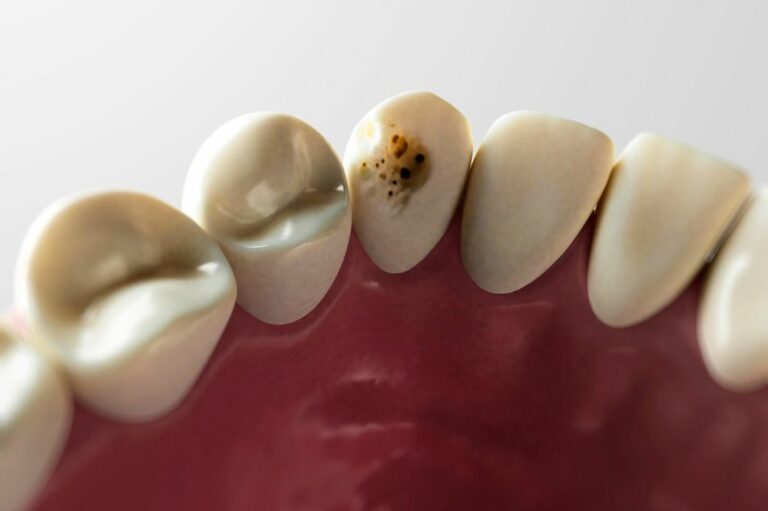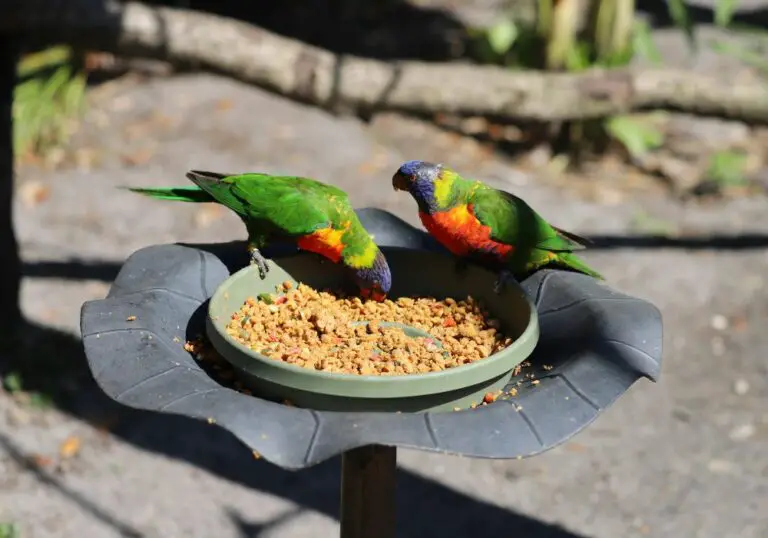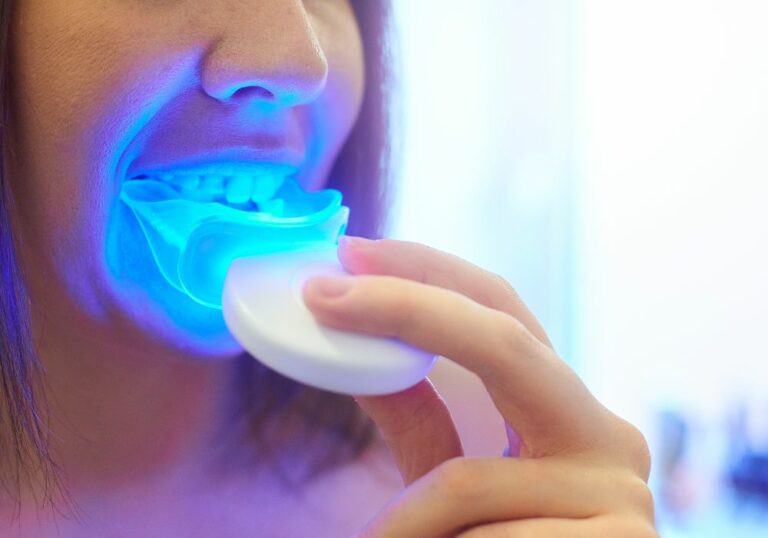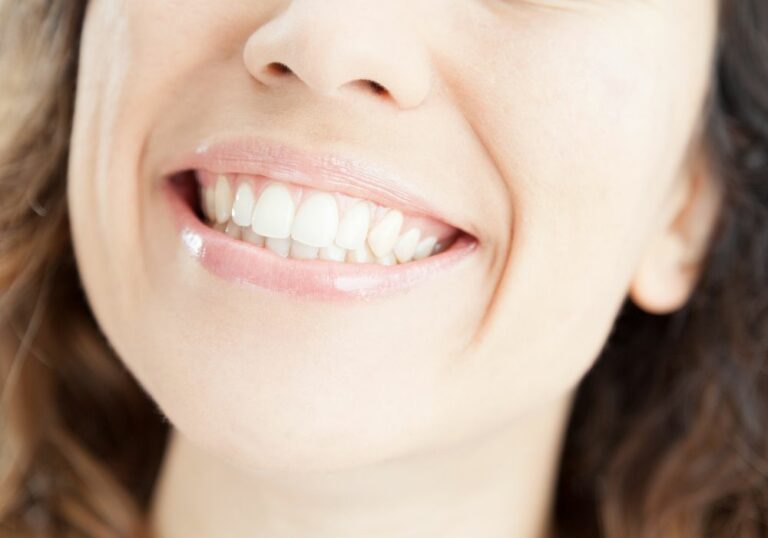Are you a new parent wondering what to expect when your baby starts teething? One of the first signs that your baby is cutting teeth is changes to their gums. As a parent, it is important to know what to look for and how to soothe your baby during this process.
Teething can be a difficult time for both babies and parents. Your baby’s gums may become swollen and tender, and they may experience discomfort and irritability. Knowing what your baby’s gums look like when they are cutting teeth can help you identify when they are going through this process and take steps to make them more comfortable. In this article, we will explore what to expect when your baby is teething and provide tips for soothing sore gums.
Understanding Teething

Teething is a natural process that babies go through as their teeth start to break through their gums. This process can cause pain and discomfort in babies, which can lead to fussiness and irritability. Understanding teething can help you provide your baby with the necessary care and comfort during this time.
Babies are born with a full set of teeth below their gums. The first teeth usually start to erupt around six months of age, but this can vary. Some babies may start teething as early as three months, while others may not start until they are a year old.
Teething can be a painful process for babies. As the teeth start to break through the gums, the gums can become swollen and tender. This can cause pain and discomfort, which can lead to fussiness and irritability. Some babies may also experience other symptoms, such as drooling, chewing on objects, and refusing to eat.
There are several things you can do to help your baby during the teething process. Providing your baby with a teething ring or other safe object to chew on can help relieve the pain and discomfort. You can also try rubbing your baby’s gums with a clean finger or a damp cloth to help soothe the gums.
It is important to remember that every baby is different, and some babies may experience more discomfort than others during the teething process. If your baby is experiencing severe pain or discomfort, or if you have any concerns about your baby’s teething, it is important to talk to your pediatrician.
Signs of Teething
Teething can be a difficult time for both babies and parents. Knowing the signs of teething can help you prepare and provide comfort for your little one. Here are some common signs that your baby may be cutting teeth:
- Drooling: Increased drooling is a common sign of teething. Your baby may drool more than usual and may develop a rash on their chin or face from the constant moisture.
- Chewing: Babies often chew on objects to help relieve the pressure on their gums. You may notice your baby chewing on their fingers, toys, or anything they can get their hands on.
- Irritability: Teething can be painful and uncomfortable, which can lead to irritability and fussiness. Your baby may cry more than usual and have trouble sleeping.
- Swollen Gums: As teeth begin to push through the gums, they can cause the gums to become red, swollen, and tender.
- Changes in Appetite: Teething can also affect your baby’s appetite. They may refuse to eat or drink as much as usual due to the discomfort in their mouth.
It’s important to remember that not all babies experience the same symptoms when teething. Some babies may have no symptoms at all, while others may have several. If you’re unsure if your baby is teething, consult with your pediatrician.
Appearance of Baby’s Gums When Cutting Teeth

When your baby starts to cut teeth, you may notice some changes in their gums. Here are some things to look out for:
Color Changes
Your baby’s gums may turn red or white when they are cutting teeth. This is because the teeth are pushing against the gums, causing them to become inflamed. You may also notice some bruising or bleeding on the gums.
Swelling and Bumps
As the teeth start to push through the gums, you may notice some swelling and bumps. This is completely normal and is a sign that the teeth are coming in. You may also notice some small cysts on the gums, which are called eruption cysts. These are also normal and will go away on their own.
To help relieve your baby’s discomfort, you can try giving them a teething ring to chew on or rubbing their gums with a clean finger. You can also give them a cold, wet washcloth to chew on or offer them cold foods like applesauce or yogurt.
It’s important to keep an eye on your baby’s gums during this time to make sure that everything is progressing normally. If you notice any unusual swelling, bleeding, or discharge, be sure to contact your pediatrician right away.
Teething Timeline
Teething is a natural process that every baby goes through, but it can be a challenging time for both the baby and the parents. Here is a general timeline of when you can expect your baby’s teeth to start coming in:
- 4-7 months: The bottom front teeth (lower central incisors) are usually the first to appear.
- 8-12 months: The top front teeth (upper central incisors) typically follow.
- 9-16 months: The top and bottom lateral incisors (the teeth next to the front teeth) come in.
- 13-19 months: The first molars (back teeth used for grinding) typically appear.
- 16-23 months: The canine teeth (pointy teeth next to the lateral incisors) usually come in.
- 23-31 months: The second molars (back teeth used for grinding) are the last to appear.
Keep in mind that this timeline is just a general guide, and every baby is different. Some babies may start teething earlier or later than this timeline, and the order in which the teeth come in may also vary.
It’s also important to note that teething can be a painful process for babies, and they may experience symptoms such as fussiness, drooling, and irritability. You can help ease your baby’s discomfort by providing them with teething toys, rubbing their gums with a clean finger or damp cloth, and giving them a cold washcloth or chilled food to chew on. If your baby is in a lot of pain, you can also talk to your pediatrician about giving them over-the-counter pain relievers such as acetaminophen or ibuprofen.
Comforting a Teething Baby
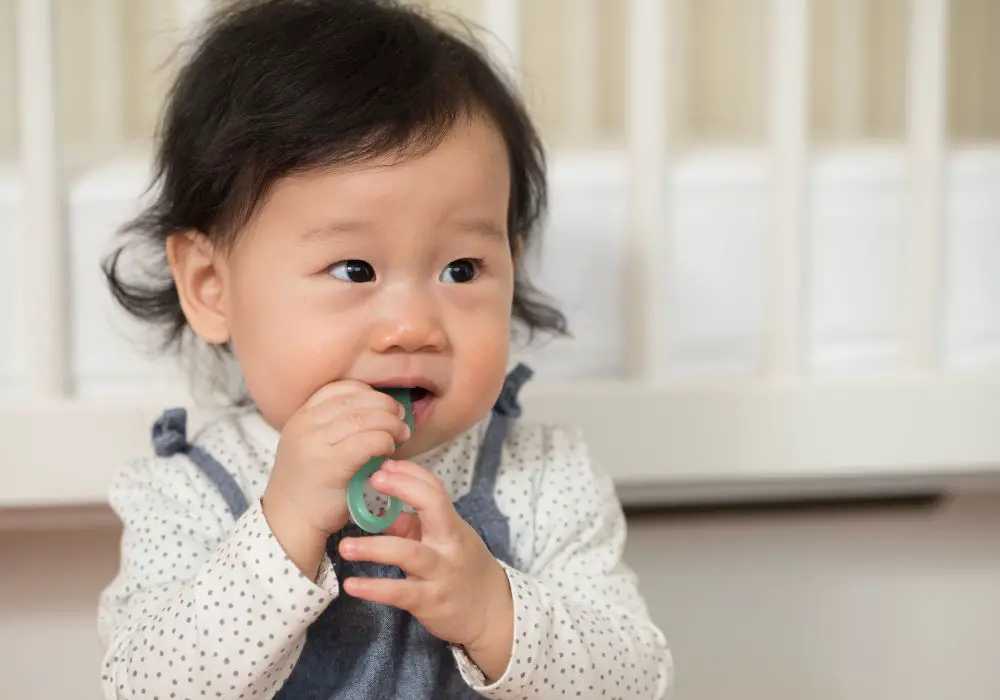
Teething can be a painful experience for babies, and it can be difficult for parents to watch their little ones suffer. Here are some tips to help comfort your teething baby:
- Massage their gums: Gently massaging your baby’s gums with a clean finger can help ease their discomfort. You can also use a soft, damp washcloth to rub their gums.
- Use teething toys: Teething toys can provide relief for your baby’s sore gums. Look for toys that are specifically designed for teething and are made of soft, chewable material.
- Offer cold foods: Cold foods can help numb your baby’s gums and provide relief. Try giving them a chilled piece of fruit or a cold, wet washcloth to chew on.
- Try pain relief medication: If your baby is really struggling with teething pain, you may want to consider giving them pain relief medication. Talk to your pediatrician about safe options for your baby’s age.
- Give them extra cuddles: Sometimes all your baby needs is some extra love and attention. Hold them close, sing to them, and offer plenty of cuddles to help comfort them during this difficult time.
Remember, every baby is different, and what works for one may not work for another. Be patient and try different methods until you find what works best for your little one.
When to Seek Medical Advice
While teething is a normal part of a baby’s development, there are some situations where you may want to seek medical advice. Here are some signs that you should contact your pediatrician:
- Fever: If your baby’s temperature is above 100.4 degrees Fahrenheit (38 degrees Celsius), it could be a sign of an infection, and you should contact your pediatrician.
- Excessive drooling: While some drooling is normal during teething, excessive drooling can lead to skin irritation and rashes around the mouth, chin, and neck. If you notice your baby’s drooling is causing skin problems, talk to your pediatrician.
- Refusing to eat or drink: If your baby is refusing to eat or drink, it could be a sign of pain or discomfort. Contact your pediatrician if your baby is not eating or drinking normally.
- Unusual fussiness or crying: While some fussiness and crying is normal during teething, if your baby seems unusually fussy or is crying for extended periods of time, it could be a sign of something more serious.
- Unusual rash or blisters: If you notice any unusual rashes or blisters around your baby’s mouth or on their body, contact your pediatrician.
Remember, you know your baby best. If something seems off or you’re worried about your baby’s health, don’t hesitate to contact your pediatrician. They can help you determine if your baby’s symptoms are related to teething or if there is another issue that needs to be addressed.
Frequently Asked Questions
How do you know if baby is cutting teeth?
Babies can start showing signs of teething around 4 to 6 months of age. Some babies may start earlier or later. You may notice your baby drooling more than usual, wanting to chew on things, and being fussier than usual. These can all be signs that your baby is cutting teeth.
What are the symptoms of teething?
Teething can cause a range of symptoms in babies, including sore and tender gums, drooling, loss of appetite, and gnawing on solid objects. Some babies may also experience diaper rash or a low-grade fever when they are teething.
When do babies start teething?
Babies can start teething as early as 3 months old, but most babies begin teething around 4 to 6 months old. The timing of teething can vary widely from baby to baby, so don’t worry if your baby starts teething earlier or later than other babies.
How long does teething last?
Teething can last for several months, with some babies experiencing discomfort for weeks or even months before a tooth finally breaks through the gumline. However, once a tooth does emerge, the discomfort typically subsides.
Once a baby tooth breaks through, how long does it take to come up?
Once a baby tooth breaks through the gumline, it can take several weeks or even months to fully emerge. During this time, the tooth will continue to grow and push its way up through the gumline.
What do baby gums look like when teeth are coming?
When a baby is cutting teeth, their gums may appear red and swollen. You may also be able to see the outline of the tooth beneath the surface of the gumline. Some babies may experience bleeding or bruising of the gums as the tooth emerges.


